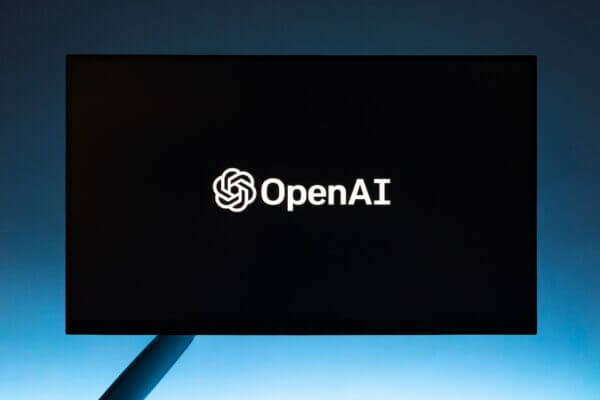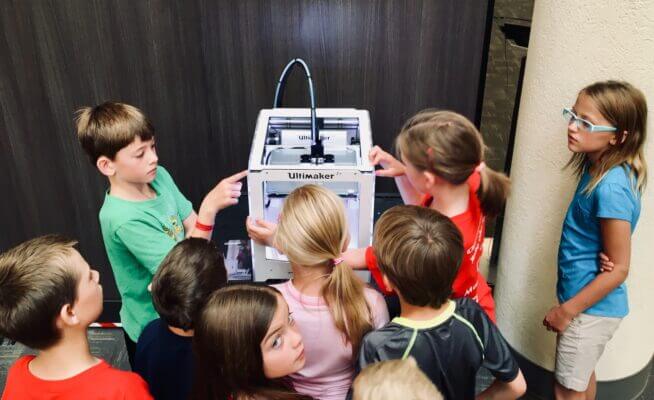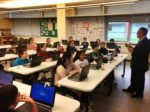The education landscape constantly evolves, and technology has been a driving force behind these transformative changes. In this article, we will explore the emerging technology trends reshaping the K12 education system in the USA. These trends have the potential to revolutionize learning experiences, empower educators, and equip students with the skills they need to thrive in the 21st century.
From cutting-edge virtual spaces to modern classrooms, these groundbreaking tech trends are transforming today’s educational environment.
Key Takeaways
- Hybrid learning revolutionizes classrooms with unprecedented flexibility.
- AI and VR/AR are transforming personalized education, while micro degrees break down barriers to knowledge.
- Gamification and collaborative learning through technology equip students for a successful future!
The Rise of Hybrid Learning

Hybrid education, a blend of online and offline instruction, has taken center stage, offering students increased flexibility and enriched engagement in their learning experiences. It leverages technology to create individualized lessons that cater to students’ interests, regardless of physical location, fostering a vibrant and dynamic learning environment.
Different custom-created platforms like Google Classroom, Assignments, and Cloud Platform play a crucial role in breaking down the barriers of traditional methods.
Benefits of Hybrid Learning
- Empowers students to engage in personalized learning experiences tailored to their needs and preferences.
- Promotes collaborative learning environments where students can interact, share ideas, and work together on projects, regardless of physical location.
- Cost saving in various aspects of education. By utilizing online resources and reducing the need for physical infrastructure, schools can optimize their budgets without compromising the quality of education.
Challenges and Solutions
One main challenge is ensuring adequate internet access for all students, especially those facing connectivity issues in offsite locations. This digital divide must be bridged to ensure all students can access and benefit from the hybrid learning model.
To address these challenges, many enterprising startups and educational institutions offer training and resources to support teachers in transitioning to hybrid learning environments.
Virtual Reality and Augmented Reality in Education

Virtual reality (VR) and augmented reality (AR) are game changers in education.
These interactive tools reshape the education sector by immersing students in dynamic learning experiences.
Schools like Compton Unified School District in California and Colorado Springs School District 11 have already embraced the power of VR, setting a precedent for broader AR and VR integration in academic settings.
Applications of VR and AR
Virtual Reality (VR) and Augmented Reality (AR) have the potential to revolutionize teaching and learning in countless ways. They transport students on virtual field trips, allowing them to explore distant places and historical sites without leaving the confines of their classrooms.
Imagine students walking through ancient ruins or witnessing scientific phenomena come to life through 3D simulations. The realistic experience makes it easier for students to retain information than if they only read their course notes or checked images.
Current projections estimate that by 2024, the VR and AR market will skyrocket to a staggering $297 billion, up from $30.7B value in 2021. (forbes)
Artificial Intelligence: Revolutionizing Personalized Learning

Artificial intelligent technology can analyze student data and offer tailor-made instructions on content, pace, and learning strategies, revolutionizing personalized learning experiences.
AI-driven adaptive education represents an innovative approach to customized teaching, swiftly adapting educational resources to meet the unique needs of each individual.
AI-Powered Adaptive Learning
The power of adaptive learning, bolstered by AI, lies in its ability to furnish educational materials designed to suit each student’s specific needs and comprehension level in real-time, resulting in remarkable academic achievements.
A prime example is Thinkster, an advanced math tutoring service that employs machine learning to achieve an astounding 90% improvement in math scores among K-8th graders.
The ROYBI Robot is another noteworthy product, personalizing lessons for children through artificial intelligence technology.
Micro Degrees: Breaking Down Educational Barriers
Micro degrees offer an agile and accessible educational option poised to revolutionize traditional learning structures by providing certifications at each stage, making education more attainable for all.
In a rapidly evolving, technology-driven world, continuous upskilling is essential to stay ahead, and micro degrees offer a seamless pathway to achieve this.
Some of the benefits of micro-degree include;
- Unparalleled flexibility allows learners to tailor their courses and determine the pace of their education.
- Micro degrees are a cost-effective alternative to conventional diplomas and degrees.
- With fewer credit points required and the convenience of online courses, learners can save both time and money while gaining valuable skills.
- They cater to the growing demand for specialized knowledge and skills. Students can select from diverse programs, focusing on specific areas like data science, computer science, business analytics, coding boot camps, and digital marketing.
- A suitable way to acquire market-relevant skills without signing up for a full university program.
Gamification: Boosting Student Engagement

Image source: https://www.agilecrm.com/blog/gamification-how-to-take-it-to-the-next-level-in-2020/
Incorporating game elements into non-game contexts has proven to be a transformative educational approach, revolutionizing students’ learning.
By infusing captivating storylines, visually appealing elements, competitions, and challenges, gamification creates an enchanting learning experience that eliminates boredom and fosters higher cognitive skills and self-esteem among students.
Prominent examples of educational games include Duolingo, Waggle, and Axon Park, which immerse students in an engaging journey within the classroom.
Learning ceases to be merely work; instead, it becomes an enjoyable adventure for all involved.
Educators can connect with their students on deeper levels by integrating game elements into instructional activities, stimulating personal discovery, and encouraging active participation.
Mobile Learning and Digital Content Platforms
Mobile learning, a pedagogical approach that leverages mobile devices, is becoming increasingly popular in K12 classrooms. It enables students to access educational content and resources anytime, anywhere, fostering a personalized and flexible learning experience.
Digital content platforms are crucial in enhancing learning experiences by offering interactive and engaging materials. These platforms cater to various learning styles and provide teachers with valuable tools to create dynamic lessons.
Successful mobile learning initiatives and platforms include interactive educational apps, e-books, and online learning platforms that offer multimedia-rich content.
Online Data and Cybersecurity

As education technology advances, robust online data protection and cybersecurity measures become increasingly critical.
Educational institutions are responsible for safeguarding students‘ personal information from potential threats and ensuring a secure learning environment.
To establish a secure learning environment, educational institutions should prioritize the following best practices:
- Regular Software Updates: Keeping software up-to-date ensures security patches and enhancements are in place, minimizing vulnerabilities.
- Strong Authentication: Encouraging complex passwords and multi-factor authentication adds more protection to online accounts.
- Cybersecurity Policy: Instituting a comprehensive cybersecurity policy helps set clear guidelines for technology usage and data protection within the institution.
- Vigilance Against Phishing: Educators and students should be cautious of suspicious emails or links to prevent falling victim to phishing attempts.
- Access Control and Backups: Implementing strict access controls on sensitive data and regularly backing up information ensures data integrity and recovery in case of incidents.
Preparing Students for the Future: STEM Education
The integration of Science, Technology, Engineering, Arts, and Mathematics (STEAM) has emerged as a cutting-edge system that equips students with the necessary skills for success later in life. It nurtures critical thinking, problem-solving, and creativity by blending arts with STEM subjects. This approach fosters innovation and ingenuity, and incorporating emerging technologies like virtual and augmented reality enhances teaching robotics and coding in the classroom.

Fueling Success through STEAM Initiatives
Successful STEAM initiatives are often based in Maker Spaces, dynamic workspaces where students can access various tools to create their work. This hands-on approach prepares them for academic challenges and fosters essential skills like teamwork, communication, and problem-solving, enhancing their readiness for life beyond traditional education.
Students can learn computer programming fundamentals through programs like Scratch, Processing, or Arduino and express themselves artistically through their projects. This blend of technical skills and creative expression instills a sense of ownership and pride in their work, fostering a passion for learning and exploration.
Collaborative Learning through Technology
Collaborative learning is a powerful educational technology approach that encourages students to work together on projects outside of regular class hours. It boosts engagement, nurtures interpersonal skills, and improves knowledge retention.
Platforms like Seesaw, WeVideo, Flipgrid, and Airtable facilitate innovative collaboration on visual projects, videos, and written pieces.
Others like Google Classroom and Microsoft Teams support real-time collaboration through document editing tools and web conferencing software, fostering seamless teamwork towards shared objectives.
Summary
The continuous evolution of technology in education opens up exciting possibilities for learning, shaping a new generation of lifelong learners.
From the immersive learning experiences of virtual reality and the personalized touch of AI to the flexibility of hybrid learning and the efficiency of micro degrees, these technological advancements promise to revolutionize students’ learning experiences in the years ahead.
Frequently Asked Questions
Below you can see some of the common questions we’re asked about edtech trends.
What are the latest technology trends in education?
Emerging technology trends in education include augmented reality and virtual reality, gamification, cloud technology, adaptive learning, artificial intelligence, microlearning, AI-powered learning environments, automated assessments, mobile collaborative learning, and digital content platforms.
What is the main difference between traditional learning and hybrid learning?
Traditional learning occurs in physical classrooms with fixed schedules, face-to-face interactions, and paper-based resources. Hybrid learning combines traditional methods with online elements and digital technologies, allowing students to access educational content remotely.
How do virtual reality and augmented reality enhance the learning process?
Virtual reality (VR) and augmented reality (AR) offer captivating educational experiences by creating immersive, interactive environments. These technologies provide virtual classrooms for simulations and unique experiences that help students understand complex topics with greater ease and comprehension.
What are the benefits of AI-powered adaptive learning?
AI-powered adaptive learning offers personalized educational experiences, leading to improved outcomes and individualized study journeys. It enables students to engage effectively, receive immediate feedback, and monitor their progress in real-time.






































